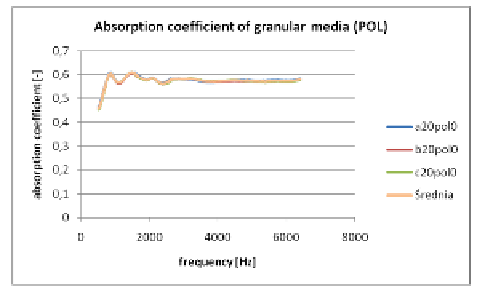Information Technology Reference
In-Depth Information
3.4 ExperimentRange
Five kinds of granularmaterials were tested: polypropylene (PP), polystyrene
(PS), poly(methyl methacrylate) (POL), polypropylene talc (PPt) and acry-
lonitrile/butadiene/styrene(ABS). Ten levels of underpressure were generated
inside the sample from 0 to 0,09 MPa in 0,01 MPa intervals. Three types of
threedifferentthicknessesoffrontsamplematerialwereanalyzed.Theresultof
thecompletedresearchismorethan600measurementstakeninthreeindepen-
dentseries.Experimentsarebeingcontinuedwithabout200more.Becauseof
obviouseditoriallimitations,onlyselectedresultswillbepresented(discussing
all the acquired data and accomplished cases would end up with an extensive
paper).
4Rsus
In the results presentation, some shortenings are used for convenience, e.g.
'a20pol4'means: a- firstofthree seriesoftests, 20-length ofsamplein cm,
pol-typeofgranularmaterial,4-levelofunderpressure(0,04MPa).
4.1 Influence of Underpressure on Acoustic Properties.
An example of the results is shown on fig. 4 - 7. Acquired numerical data is
presentedadditionallyintables2-3.Presentedinfig.4areexperimentalvalues
of the physical sound absorption coecient of a sample with POL granulate
for three measurement series. In this case, the granular structure was tested
with atmospheric pressure inside it. One thing to notice is that the scatter of
resultsisminimal.Thevaluesoftheabsorptioncoecientwerecloseto0.6ina
broadfrequencyrange(1000-6000Hz).Takingintoaccountthatthisrangeis
particularlyimportantforhumans,theresultcanbetakenassatisfactory.
Fig. 4.
AbsorptioncoecientforPOLmaterial,atmosphericpressure

Search WWH ::

Custom Search